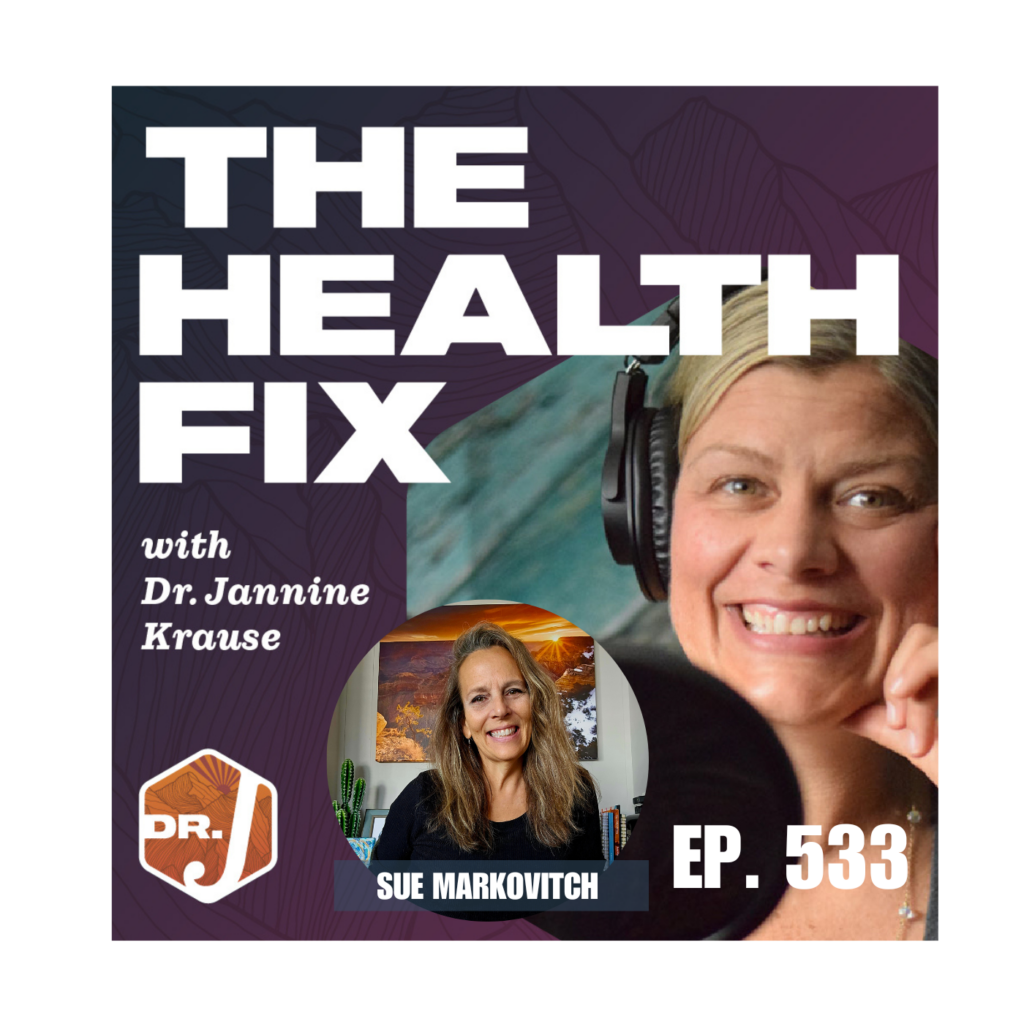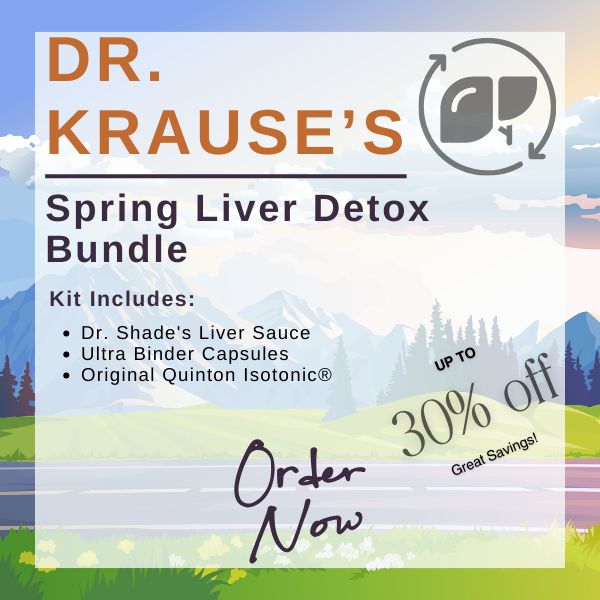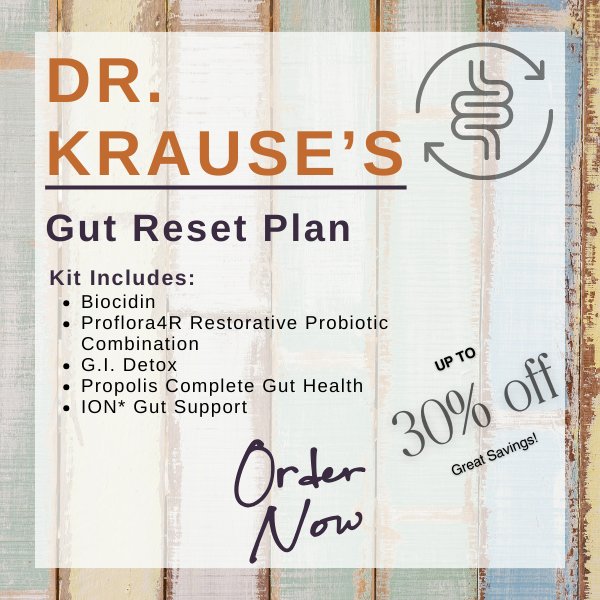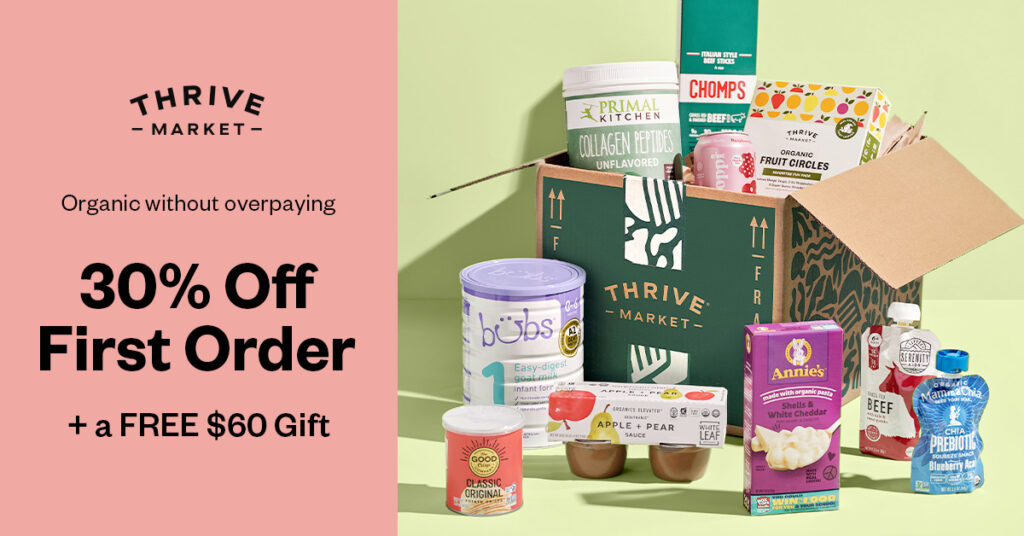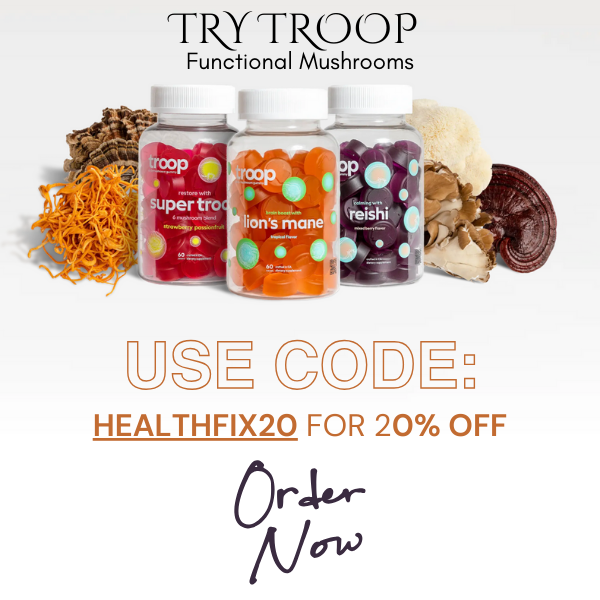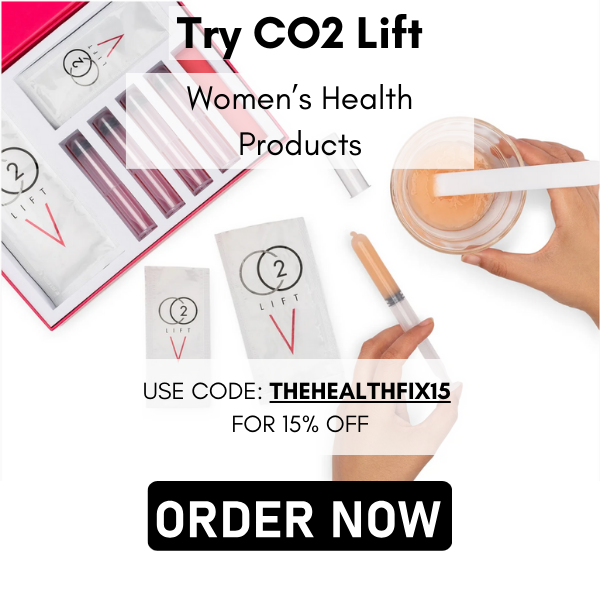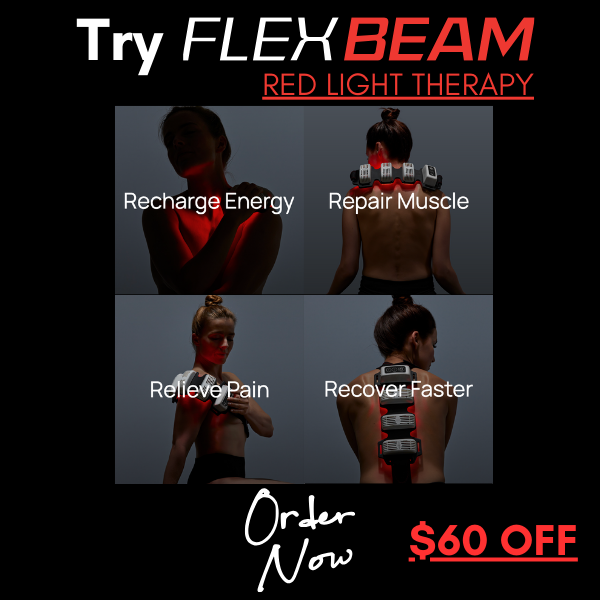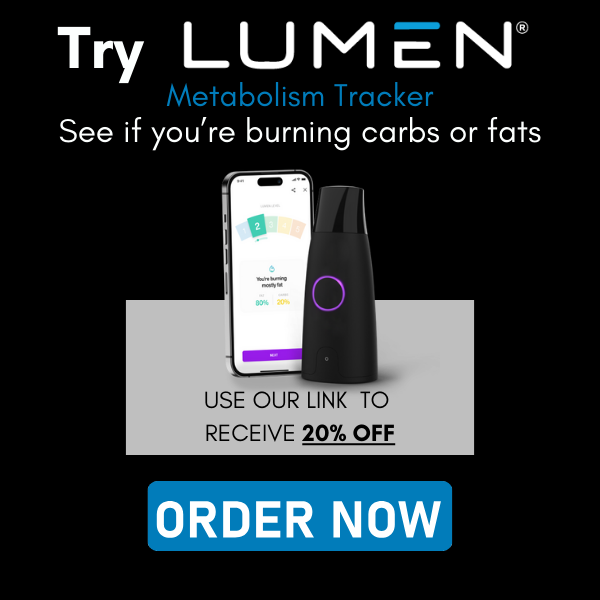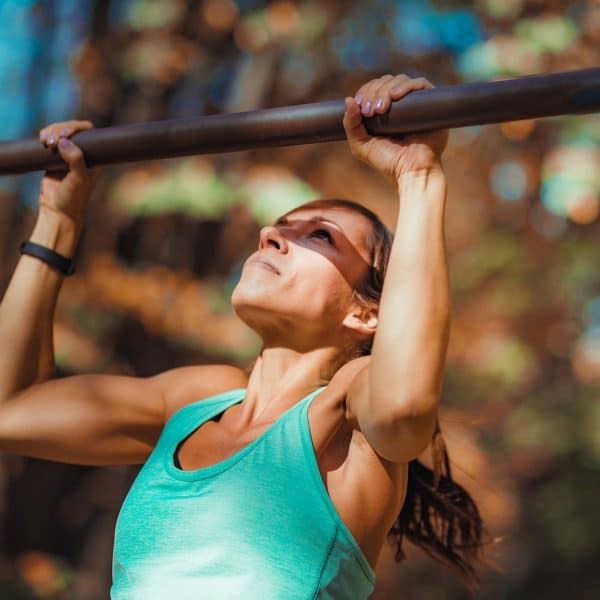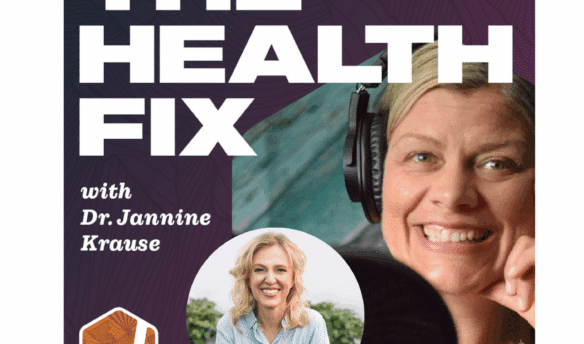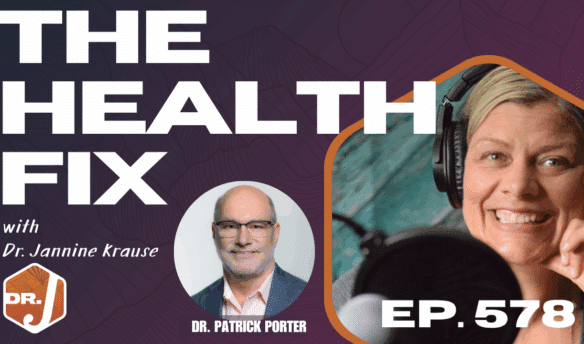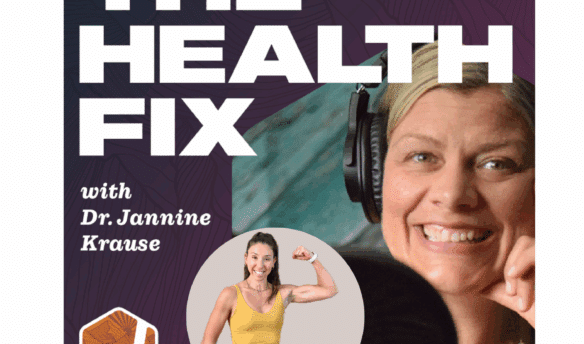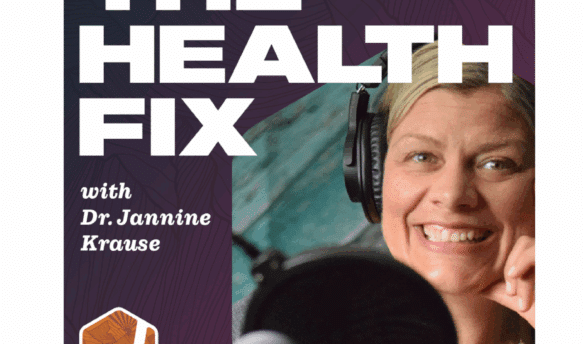Sue Markovitch is a specialized personal trainer for women over 40, expert in trauma-informed fitness, and the author of I Know What to Do, I Just Don’t Do It and Up Is Mandatory. She is renowned for applying spiritual principles to health and fitness and creating safe spaces for women to recover self-worth and achieve sustainable health. In this episode of The Health Fix Podcast, Dr. Jannine Krause interviews Sue Markovitch on creating a fitness lifestyle that works for you.
Dr. Krause’s Protocols
Instructions Included
Traveling soon? Looking to detox or reset your gut? Try one of Dr. Krause’s Fullscript plans.
Key Takeaways:
1. Rethinking Fitness: Feeling Good vs. Looking Good
Sue challenges the traditional fitness narrative with her empowering perspective:
- “What if fitness was more about feeling good about yourself instead of feeling good about how you look?”* This reframing emphasizes self-acceptance and internal well-being over external validation.
2. The Damage of a Lifetime of Dieting
The fitness and diet industry has perpetuated cycles of trauma for many women, leaving them feeling unsafe and inadequate. Breaking free starts with acknowledging these experiences and creating supportive environments for change.
3. The Role of Strength Training
Strength training is incredibly empowering for women over 40. It builds both physical resilience and emotional confidence. However, consistency often eludes women, highlighting the need for deeper, personal work to uncover and address barriers.
4. Identifying the Deeper Work
For women who know what to do but struggle to follow through, the key lies in exploring the inner obstacles that hold them back. Sue guides listeners to:
- Pay attention to the internal dialogue when attempting change.
- Recognize the “blinders” society has imposed regarding fitness expectations.
- Address self-sabotaging behaviors stemming from trauma or low self-worth.
5. Myths and Lies of the Fitness Industry
Sue and Dr. Jannine Krause critique the common motivational tactics in fitness that often lead to guilt and burnout. True motivation comes from understanding one’s unique needs and working with a compassionate, knowledgeable coach.
Highlights from the Conversation:
- Self-Worth Recovery: Sue’s trauma-informed approach creates a safe, judgment-free space for women to reconnect with their self-worth.
- Re-education on Fitness: Sue is on a mission to debunk harmful fitness myths and teach her clients what truly works for sustainable health.
- The Voice in Your Head: Understanding and addressing negative self-talk is critical to making lasting changes.
- The Importance of Individualized Coaching: Having a coach who truly sees and understands your unique journey is invaluable for success.
Resources from the Show:
- Visit Sue’s Website: suemarkovitch.com
- Books by Sue Markovitch:
- I Know What to Do, I Just Don’t Do It
- Up Is Mandatory
Final Thought:
Fitness is not about perfection or punishment. It’s about reclaiming your power, finding joy in movement, and embracing your worth—exactly as you are.
Our Partners
Podcast Transcript
1:02 – Intro
4:59 – Sue’s back story
7:28 – Designing a system around your health
11:39 – Identify what is coming so you can step into change
16:24 – Metabolic rate
23:13 – Fitness from the inside out
29:23 – Breaking up with your scale
30:49 – Daily practice
37:49 – A mile a day can change your life
42:14 – Where to find Sue
[Preview] And I will always be a believer of fitness from the inside out, not from the outside in.
You know, if we start looking at our bodies as the problem, and I need to fix this part of my body,
and this part of my body, my hair and my wrinkles or this or that, I just think that’s so backwards.
If we look within and go, “How do I feel? What are the beliefs I have about my health and fitness,
and my worth, and my empowerment as a woman, to step into this area and be my fittest self to live my best life?”
That impacts everything so you don’t have to then focus on Iraquals today and then sell you like tomorrow
You know can’t stop it
You only have a daily practice that either supports your health and fitness and best life or it doesn’t support your health and fitness and best life
You’re already in it. So my saying in my book is no more day one and people have really liked that over the years
So when I had the studio we just we just kept going everything was normal. There was no new challenge
There was nothing like that. I’m like you guys are already doing it. You don’t need to do anything new. Oh, you know
[Intro] Welcome to the health fix podcast where health junkies get their weekly fix of tips tools and techniques to have limitless energy
sharp minds and fit physiques for life
JANNINE: Hey health junkies on this episode The Health Fix Podcast, I’m interviewing Sue Markovitch
She’s a personalized trainer for women over 40.
She’s an expert in trauma-informed fitness.
And the author of “I Know What to Do, I Just Don’t Do It”
and “Up is mandatory.”
She’s renowned for applying spiritual practices
to health and fitness and creating safe spaces
for women to recover, self-worth, and achieve sustainable health.
I absolutely enjoyed my conversation with Sue. She really has the ins and outs of what keeps us from getting results with health, fitness, weight loss, dare I say those kind of things.
And really she is helping folks find fitness and use it as a board to launch into all things
health and really being able to take care of yourself.
And you know, let’s face it, as busy women, it’s sometimes hard to take care of ourselves
and men experience this too.
And especially when you’re juggling business life, you know, work, whatever it may be,
whether you have your own business or whether you are
juggling your career, kids, and maybe you’re in the sandwich area
where you’re also taking care of your parents too.
Lots of stuff on our plates these days, but nevertheless, Sue is talking about
how you can really use fitness to fuel your health journey.
All right, let’s introduce you to Sue Markovich.
Sue Markovich, welcome to the health fix podcast.
SUE: Thank you for having me.
JANNINE: Oh my gosh, when we got to introduce
with my good, good pal, Dr. Brie Schoeman,
you know, she just raved about you and I was like,
okay, I gotta meet Sue.
And then when I saw your book, I know what to do.
I just don’t do it.
I was like, that is like the song I hear on repeat
in my office.
I’m gathering, you probably heard that over and over again
and maybe experienced that a little bit yourself
at some time in life.
SUE: Well, I experienced it myself.
And then when I own the personal training studio,
I heard it all the time.
And I thought there’s a real deeper issue here
than just knowing what to do.
We’re over inundated with information,
but that’s not solving the problem.
JANNINE: No, it’s like we have more information.
I mean, sure, there’s confusion.
There’s, I mean, I will say that my opinion
is that we have a lot of not necessarily misinformation,
but I would say the biggest issue I’m struggling with
is one person says one thing,
the next person says the other thing,
people are paralyzed by, I don’t know what to do now.
SUE: Yes.
JANNINE: And fats, I mean, fats are another big thing. And I’m sure you’ve
seen that in the industry as well.
SUE: Right, there’s all these small things that the media tends to
pick up on and blow up into a big thing. And it’s really not.
There are several basic scientific things in health and
fitness that if we just stay focused on those, those are the
things that are going to get you moving in the right direction.
JANNINE: Absolutely.
Absolutely.
Now, of course, I’m curious, but I’m also, you know, want to see if it
matches up with a lot of the things I’ve seen as to these underlying, I know
what to do.
I just don’t do it.
What’s the deeper story?
Because I think having that highlighted for a lot of folks for them to see, like, Oh,
I’m not weird or I’m not like some strange outlier.
This stuff really happens.
What was it for you?
What was kind of the underlying story
that was going on for you?
SUE: Well, I had some trauma in my childhood
and I had repressed a lot of it.
And I was very unhealthy.
I ate a lot of fast food.
I didn’t think about my health a lot.
I was a smoker.
I drank too much.
And I kind of had this awakening at 40
where I got diagnosed with kidney disease
and it scared me.
And I thought, I’m not taking care of myself at all.
I need to figure out what’s going on.
And I was learning what to do, but I was still struggling to do it.
And that’s when I started realizing this was going to be a deeper journey for me.
It wasn’t going to be just a matter of, oh, I was supposed to eat broccoli instead of french fries.
That doesn’t do me any good.
I’m just not that kind of person.
I have to understand why I would rather choose french fries over and over and why I would
resist cooking myself vegetables and having this self-care routine.
So I had to understand that deeper, kind of a worthiness wound if I could call it that.
JANNINE: Yeah.
Yeah.
I mean, the wound concept is so huge.
And I think for a lot of people, it’s there.
Maybe it’s been labeled trauma that I think that terms overused at this point, but wound
And I think actually really says volumes about what we’ve all kind of experienced.
And like I myself, you know, I’ve gone through phases of like, I know what to do.
And I kept being like, I’m too busy.
I can’t do this.
You know, workouts always happen for me, but meal prep, that’s where I would fall off
and be like, I know I need to do it.
But, you know, I’d like to lay on the couch on Sunday, you know, or work.
And this is what my my things as you can work as an excuse.
I know a lot of people do that too.
SUE: Right, right.
A lot of times I don’t have times, should be stated,
I’m not willing to make time,
because I don’t believe that’s gonna,
that investment is worth the time.
I need to rest my brain, I need to lay on the couch,
I need to watch Netflix.
I can’t take that time out to prepare that food.
JANNINE: Yeah, it’s so fascinating decoding these things.
What are some of the other common things
that are underneath that you see
that we haven’t talked about yet.
It’s just so folks can see if they can find
a relatable situation or conversation.
‘Cause I know a lot of them are common
and they all weave kind of together,
but just curious as to what you’ve seen.
SUE: Well, I break it down into,
I know what to do, I just don’t do it,
kind of comes in three components
or maybe three levels you could look at it as.
If you’ve ever read Atomic Habits by James Clear,
goals aren’t that great.
Systems are what’s important. What is your daily practice? What is your daily habit?
So for people just stepping in and trying to learn I would say, you know, let’s design a system
If you want to work out at home, do you have a pair of weights?
Do you have a space to do it if you’re doing it on zoom with somebody, you know, do you have that setup?
What’s your setup? What’s your environment?
So a lot of times that’s level one or your thing about working out, but you live someplace that has winter weather
So do you have a gym you can join did you join it? Did you go there? Did you make yourself feel comfortable there?
System seems to be number one
Component number two is more like
Accountability and community so that’s why people usually hire me for personal training is for the accountability
I mean I can teach you how to do a bicep curl and you know that for the rest of your life
But that doesn’t mean you’re gonna show up and do it twice a week
So that’s the accountability or your walking group or your body pump fitness class that you love that you go to twice a
Week and have to sign up ahead of time. So that accountability
Is kind of that level two and then some people even if they have one in two in place
And they’re still struggling and suffering and having health issues. I tell them you’re gonna have to go deeper
You’re gonna have to find out what the false beliefs are that are rooted down in your
mind, mind, body and spirit that are making this hard for you to do what you’re asking of yourself.
And that’s hard for some of us who have this, it might be this worthiness wound like I called it, or some other type of wound, or
trauma, or things like that. So in that case, 12 steps, recovery,
some kind of spiritual practice,
therapy,
You know, what do you need? Do you need to heal?
Maybe you need to heal something before you can even think about
Levels one and two.
JANNINE: Yeah. Yeah, I think that’s incredibly important to recognize because I think a lot of us will beat ourselves up
Like man, I keep trying to do this. I tried again, right?
I tried to get to the gym again this month and then it just didn’t work or I tried to eat healthier
I tried to meal prep again, and I just couldn’t do it and
You know, I look at it even with myself, right?
And my biggest thing, I’ve been on a journey of healing my work wounds, right?
And you’re looking or maybe it’s, you know, a work addiction kind of, you know, wound
that’s going on.
And literally, like, I found myself at one point, yeah, not being able to meal prep,
not being able to even take the time to log what I was eating to figure out where things
are.
And so it’s like, okay, obviously there’s something deeper at work here.
SUE: Right.
Uh, I teach a seminar and a lot of times I’ll put a small box, a medium sized box,
and then a big arrow on the floor and I do it with duct tape and I’ll have a,
a participant stand in the small box.
I said, this is stuck.
Describe it to me.
And you just kind of described some of your stuck.
I said, all right, I’m going to ask you to take a big step out and I’ll step into
that bigger box.
This box is change.
Now, when you step out to change what happens, you get bombarded with a tsunami of fears,
excuses, lies, a whole bunch of stuff.
Like, there’s this narrative that happens in your mind.
So I often talk about trying to quit smoking.
And I would step out into that change of argument, “All right, I smoked two, you know,
one in each hand all weekend and now it’s Monday morning, I crushed the pack, I throw
it away, big ceremony, I’m going to quit smoking.”
By 10 o’clock in the morning, my mind is unhinged with, well, nothing’s ever going to,
coffee doesn’t taste the same.
You’re never going to be able to have a beer again, you know, how are you going to deal
with your stress?
And smoking has always been there.
And you fail anyway, why bother?
And there’s this whole narrative that comes very quickly.
I believe if we can identify that narrative as predictable, oh, I know what’s coming when
I step out into change, all these things are going to come up for me.
I’m too busy. I don’t have time to meal prep. I am tired. I have to work. Whatever those
things are, identify your narrative and then you kind of have a sword and shield against
them and you can stand strong and go, “Oh, I know this one. This isn’t true, but it’s
powerful.” So I have to be more powerful than the narrative so I can stand against it,
stay in that change box instead of jumping back to stuck, AKA comfort zone, because I
want to go where the arrow is, which is forward, right? Right. So having someone’s
actually stand in those boxes and go through that and identify their narrative
or their tsunami that’s trying to knock them down can be very helpful. So what I
would recommend to your listeners is what are you hearing when you try to make a
change? Write it down and then ask yourself is this really true or is this
just something I’ve been believing for a long time and it’s keeping me stuck.
JANNINE: So powerful. I love the duct tape idea. I’m like, oh, I can do that. I work on that.
It’s like really put everybody through that. It’s, yeah, it’s a good, it’s a good like
visual, but also like embodied experiments because you’re in, in that box. Now, curious,
did you learn that from somewhere? Did, did you come up with that?
SUE: I just kind of came
came up with that again, I was very lucky to have this personal training studio for women
over 40. They taught me everything. When I first started personal training, I was a typical
personal trainer, taking measurements and, you know, weigh-ins and all that stuff. But
very quickly I was learning, that’s not the issue. We have deeper issues. And so, I just
immersed in learning about this change process and why it’s so hard for some people. And
Also, I understood because it was hard for me.
Quitting smoking wasn’t easy for me.
Losing the weight I had on wasn’t easy for me.
Those were struggles.
So I relate to the people that struggle.
And so, yeah, I don’t remember exactly how I came up with that,
but it worked really well.
JANNINE: Well, I think it brings up something very important.
When we decide we wanna be a personal trainer, right?
A lot of people, you go to any old gym,
let’s, you know, you think any box gym, right?
And they have a lot of younger folks who are personal trainers.
Sometimes you have older folks, but the typical is some someone younger.
You don’t tend to see the older folks as much.
Um, and what you’re seeing is folks that have just really had a love for fitness
and they want to share it with others, but they don’t necessarily understand the,
the mind benders.
Let’s put it that way that we have.
And I, you know, this is one of the things we, we talked about before we hit record is I
And like women working with women, I’ve learned this the hard way because I’ve also tried
to recommend male trainers for some of my women.
And I now see the hang up issue because I actually didn’t experience this, you know,
I can’t, I got stuck and not meal popping and not doing the things that each though he’s
doing on autopilot because I liked it.
It was just like part of me.
And then when I became stuck, I was like, I don’t think any of the the guy trainers I’m
working with are going to understand what, you know, especially perimenopause fluctuations
in hormones that can add another layer to this.
Now, did you notice as as like, did you have hormonal shifts going on when you were starting
to work on getting healthy or was this was this not quite yet?
you were just turning 40 with the kidney disease diagnosis or how did it play out?
SUE: Well, it’s interesting. I actually went through menopause at 40 naturally, so very young.
Wow. And I was just getting into my fitness journey as well. So,
it’s hard to tell what had an impact on me the most. But yeah, as I was learning to
Strength train, I was also going through menopause.
You know, as I was building up my metabolism by exercising,
my BMR was probably dropping because of a drop in hormones.
So there was a lot going on there,
and there’s always a lot going on with women because of that.
You know, and most people don’t understand even the basic,
like the basal metabolic rate, I think, is one of the most important numbers that we have in fitness.
And, you know, people are more interested in their body weight or something like that.
the base metabolic rate is the amount of calories you burn, you know, it’s your engine. So
sometimes I think I went from an eight cylinder car to a four cylinder car very quickly by going
through menopause so young. I just didn’t burn as much fuel, right? So I had to do some things to
change that.
JANNINE: I love that analogy, analogy going from the eight cylinder to the four cylinder car
Because this is what we see things slow down, right?
And then we’re a lot of people, if they haven’t been fit,
or it’s a long time, say they did athletics in high school.
And then they were a former athlete,
now they’re coming back to it.
I do find that a lot of women get really frustrated
on the metabolism thing.
And it’s so fascinating to me to think about
metabolic rate versus like all the other weight measurements,
the arm measurements, the waist measurements,
sometimes having that wind of knowing
that your mitochondria are working better,
game changer, and we don’t think about that.
We’re all about like, I’m not losing weight
so it’s not working.
SUE: And you can create new mitochondria with fitness.
JANNINE: Right.
SUE: What a great thing, that’s at the cellular level.
Your little energy production factories,
you can make more of them if there’s more demand for it.
I think that’s one of the greatest things
in fitness science.
JANNINE: Yes.
And we don’t really talk about that often
And that is something I would say I cringe on
because we’re all about the weight loss,
we’re all about the, you know,
those things and how the body looks.
But I’m like, wait, if my body is a better machine,
I’m more resilient to all kinds of things.
This is huge.
So yes, I love, I love thinking about that.
Now, one of the other things that we had kind of chatted
about before we hit record was really the strength training
component of things and how, you know,
not only are we getting more mitochondria,
we also have some, you know, empowerment
and feeling good with being strong kind of things,
like the mind benefits there.
Let’s talk a little bit about how you’ve seen yourself,
how you’ve seen your clients really transform
once they understood where they were stuck,
where they were headed,
and how things feel.
Once you start building muscle,
you feel strong, you’re doing things.
SUE: Well, I think there’s a couple of things
that are going on there.
One, when you shift from, I know what to do,
I just don’t do it.
Two, I know what to do, and now I’m doing it.
There’s a huge empowerment.
Like it lights up your mind.
It just lights up who you are.
You become this empowered woman,
and you get to go to your doctor for a visit,
and when they ask you a question,
you say, “Oh, I’m strength training now, twice a week.”
It’s just a great empowerment place to come from, right?
It’s very exciting to do that.
There’s also that, you know, there’s moments in the gym
where you conquer something you didn’t think you could do,
that changes you, where you show up
where you didn’t feel like, that changes you.
It starts resolving some of those false beliefs
about I don’t have time or I can’t do it
or I’m too weak or I’m too old,
or whatever those excuses might be,
once you start doing it, now you have a new set
of false beliefs and they come from a place of yes, I can.
And that’s a different way of approaching life and health
and fitness and all of that.
And a lot of my clients want to,
I have a lot of clients 55 and older
and they want to work on posture, balance
and things that they have started to lose.
So to have that, you know,
when you feel like you’re starting to lose something
as you’re getting older and you find out
that you can actually make improvements in that
and get it back, it’s very empowering.
You just have to own it, go this is up to me.
If I do the work, I will get stronger.
If I do the work properly, I can fix my posture,
I can improve my balance.
It gets very exciting.
JANNINE: You know, that’s another under,
you know, like underutilized,
or how do we say not utilized,
under expressed benefit of fitness
is really talking about the posture, so less pain.
But agility and balance is something that I talk about a lot
because this is preventing falls
and being able to go hiking and feel confident
and jumping over creeks
and balancing on rocks going through a creek.
These are things that I think a lot of women
also overlook in the,
I wanna lose weight blinders, if you will.
SUE: Yes.
JANNINE: How–?
Good ahead.
SUE: If you go to a box gym and you get a 25 year old guy as a trainer. He might be really good, but
he’s probably not going to know to focus more on balance or that you might, if you do any
kind of jumps, even if you can do it, you might pee your pants and you’re embarrassed
to say or any of those things. So that’s where you have to, you know, watch what you’re choosing
in fitness because you don’t want to do something that adds to the false belief that fitness
doesn’t work for me.
JANNINE: Right. Right. And, and you know, I, I, having come from that place,
right, of not understanding, not having enough education, you know, way back in the day when
I was looking at women and fitness, it makes sense, you know, yes, when you’re younger,
no disrespect to younger folks unless they’ve had training, because I’ve seen some folks
in my community in Washington who have had training understand the needs, which is awesome.
But this is where someone would want to be looking to see if someone’s had their training.
But here’s the thing.
A 25-year-old guy is not going to understand fitness and embodied.
Let’s put it that way.
We’ve not experienced what a 50-plus-year-old woman is going to feel and feel like.
There’s just nothing like it.
You know, and so I think this is where your experience is very unique because of going through the process as well.
SUE: Agreed. They can be a very kind empathetic individual. And if you say my knee hurts when I do that they might say well
We’ll avoid that
But I can say well tell me more about that
I have that too and here’s what worked for me because I’ve had all the things because I’m almost 60
JANNINE: Yeah, and I wouldn’t have guessed.
SUE: Oh, thank you
JANNINE: Your skin is amazing. It looks so good.
And so, and this is the thing, you know, like I believe in you.
A lot of people are doing fancy treatments for their skin and fancy treatments for,
you know, all the parts of the body.
But really, I do feel like having more mitochondria, having that good sweat,
all of this helps to improve the skin.
SUE: And I will always be a believer of fitness from the inside out,
not from the outside in.
You know, if we start looking at our bodies as the problem and I need to fix this part of my body and this part of my body
My hair and my wrinkles or this or that I just think that’s so backwards if we look within and go
How do I feel? What are the what are the beliefs? I have about my health and fitness
and my worth and my empowerment as a woman to
Step into this area and be my fittest self to live my best life
That impacts everything so you don’t have to then focus on I wrinkles today
and then tell you like tomorrow. You know, I just don’t like that stuff anymore. I want to do a
holistic approach to health and fitness and everything I do I want to fit in with that.
And I don’t want to turn it on my body anymore. And I don’t want anyone else to turn it on my body.
I don’t allow that.
JANNINE: We are so quick to beat up on our bodies.
SUE: Yes.
JANNINE: You know, pinch, poke, you know, prod, be like, “Ugh, this or that.”
It’s, I think for a lot of women, that’s where the root lies.
And I know a lot of people talk about this now in podcasts, but I think we really aren’t
getting to, I think we acknowledge, okay, maybe self-talk and things of that nature,
but we aren’t getting to the root of this.
And I got to say, like, self-worth, but also spiritual component of why you poke and prod.
I’m guessing you’ve worked on that a little bit.
SUE: A hundred percent.
I mean, when a belief about who you are
gets rooted down within you,
whether it’s from growing up seeing magazine covers
or beauty as the media thinks it should be
or because somebody said something to you
or treated you over the course of a bad marriage
with negativity or something like that.
And you never feel good enough.
I mean, I know that feeling too.
And there’s no amount of punishment
you can give to your body and no amount of fitness
you can attain that’s gonna solve that.
That’s a very deep wound that needs to be healed.
And that’s again, that’s your spiritual practice.
Maybe that’s some therapy.
That’s finding community that understands the same thing.
And conquering that brainwashing
that women have had our entire lives, that here’s what’s beautiful and here’s what’s acceptable.
So I actually don’t really like working with women anymore that want to lose weight. And I’m doing
little quotation marks with my fingers because I’m over it. You’re perfect just the way you are
because you’re a whole human being and you’re worthy of love and belonging like Bernay Brown says,
you know, exactly as you are. But if you want to improve your posture and have a little more
core strength and do some strength training and eat better and get healthier, I’m on board.
But I’m not going to be a part of the brainwashing of women anymore.
And I’m glad I learned very quickly not to be part of that when I first got into personal
training.
JANNINE: Yeah, it’s, it’s so deep.
It’s so deep in there and marketing, you know, unfortunately we know marketing cells.
We know the whole concept of, you know, some, what they want, give them what they need.
But at the same time, like, I just, I can’t participate in it.
And I also when, when it’s like the most disheartening thing, when I’m working with women, they
tell me they want to work on their hormones.
They want to work on all the other health things.
And we get all this progress and then like third visit, they’re like, but I haven’t lost
the weight yet.
You’re like–
SUE: Right?
Understand.
JANNINE: Uh, is this, is this what it’s about?
Now we got to talk.
Now we’re gonna have a therapy session. You know, you just signed yourself up for a therapy session.
It’s cringy, right? It’s cringy. And, you know, I would, I’d be lying if I said I wasn’t there
a lot, you know, without, without my life. But now I’ve come to see it as my, my issue with getting
some weight off isn’t what I eat, how I do things necessarily, you know, because sure, I, in the
the past would be like, “Hi, two pieces of bread.” And I didn’t get enough protein. And,
oh my gosh, I can feel my cells, you know? And it’s all, it’s all, you know, a big mess
now. And I better go eat a whole bunch of protein next. You know, and you can, you have
that talk in your head. And then you’re like, I’m not going to lose weight today because
I did that. Because you’re mad. I mean, I think to myself back, I think back to myself,
like, could you imagine like how much you mess, you just message all these things to your brain
and what is the in body? What do you do? What do you do with that? And I know I’m not alone in that
situation.
SUE: You’re not at all alone. And I think it’s devastating because it robs women sometimes
of their purpose in life because they’re so attached to this purpose of becoming a certain size or
shape or look. And they don’t have then the energy to be who they were truly intended to be.
And so I’m hard on people in this one way.
And that’s until you understand, you can eat whatever you want, whenever you want.
And you’re still completely worthy of everything that’s offered to you in this life.
Until you’re there and you stop labeling these foods as good.
And this food is bad and I was bad today and I was good today.
I mean, that is keeping us stuck as women at this level that we could be doing so much more in the world.
But we’re using all our energy for this stupid body image.
And I really don’t like it.
JANNINE:Oh, I’m so with you.
I feel like the scale was literally
invented to keep women busy.
And I’m–
SUE: Exactly.
That’s exactly.
I have a few videos from the past of people
taking their scale out back and giving it a good whack
and throwing it in the dumpster.
So we’ve had some wins like that.
I highly recommend it.
If you’re serious about fitness and health,
stop number one, get rid of your scale.
It’s just not telling you what you need to know.
JANNINE: Oh my gosh.
You know how cathartic that sounds?
I’ve never thought of doing that, but it sounds amazing.
SUE: It’s wonderful.
JANNINE: I love it.
All right, guys, let’s maybe let’s talk about how we’re going to kill.
Okay.
For scale.
It sounds so I could just see the like, you know, oh, I could see it.
It sounds fabulous.
And I think for a lot of people breaking up with their scale,
maybe like the best, you know, they have these acts
throwing places, right?
We throw axes.
I’m like, maybe you have the scale crushing business.
Maybe that’s our new adventure.
So that’s why–
SUE: I love that.
I love that because I really do feel like, I mean, you know,
I’ve heard from these women, they get on every morning and that
that will dictate how they can behave for the rest of the day,
what they can wear, whether they can shine or hide.
JANNINE: It dictates your whole mood.
Yeah, I’ve been there.
It literally is–
SUE: Me too.
Me too.
JANNINE: I mean, it’s the difference between crying
for a couple minutes and then being like,
well, I’m gonna starve.
You know, like today’s a fasting day.
You know, then it turns very disordered
and at least in my world.
And I know I’m not alone on that either.
SUE: For so many of us, so many.
It’s disordered in one way or another.
I try to get women also to think about, you know,
as we were in our 20s, 30s, 40s,
we were looking for some kind of weird perfection, right?
And then came along progress over perfection,
which I understand, but I don’t love
because that’s still failure if you’re not making progress.
So to go back to James Clear and Systems,
daily practice is really what’s important.
And if you can wake up and go,
my daily practice is gonna be self-care
and today that’s gonna include strength training
and maybe food prep and tomorrow it’ll be a walk.
And the next day it’ll be meditation.
you know, it could always look different,
but it’s a daily practice,
it’s a much more present practice
than when we, you know, start getting it on,
run a marathon and lose 20 pounds,
and you know, I got my six months planned out
in my spreadsheet, and I’m gonna weigh in,
and I’m gonna track it all, and write down my food.
Like, yuck, I don’t ever wanna do that again.
JANNINE: Me either, I mean, it sounds awful.
And I think most people,
that’s why we get into marathons in the first place.
Does anyone really like running marathons?
I mean, there are some patients,
I are in clients of mine that I know love running.
But like other than a certain very small percentage
of people that love running,
I’m pretty sure most people,
I mean, having run a few marathons myself,
watching people at like mile 19,
you’re like, I can tell exactly who does this for fun
and who is like, I didn’t lose those 10 pounds
and I’m really pissed
that I’m having to finish this thing.
SUE: Exactly, I’ve done them too.
And it’s actually the worst weight loss plan
you could possibly imagine
because you need to fuel your body a lot to train for and run a marathon.
Yeah.
If you’re not doing it for the mental, the fun of it, I would stay far away from that.
But point being, runners do it too.
Well, as long as I beat my PR from last time, my personal record, as long as I’m getting
faster, everything’s okay.
And that’s just another lie of fitness.
We don’t have to be progressing.
know, I definitely reached a peak of certain things in my fitness and now coming down the
other side of this beautiful mountain, I’m going to turn 60 in February and I’m going
to be present with my 60 year old self and body and not expect some superhuman strength
to be progressing beyond what I could do when I was 40. That’s stressful. That’s bringing
your central nervous system into it. You know, if your workouts are causing fight or flight,
Now you’re really in trouble,
hormone-ly and otherwise.
JANNINE: This is such a great topic that you’re bringing up
because I’ve had many clients in my practice
where they’re going to kinda like the the fitnesses
that are gyms that are not quite crossfit,
but you are like stronger.
Like it’s the idea is strong her.
I think it’s a term that’s been used quite a bit.
SUE: Yeah.
JANNINE: But they’re like harder workouts
where like I’ve done them just to see, to understand.
And like I’m wiped out for three days after that.
And I’m like, there’s, and I’m 47,
or I’m not 47 yet, but I’m gonna be 47.
And you know, I’m looking at it going like,
“Okay, this is quite intense,
“and it’s cool if you can do it.
“Great, you finished it.”
But if it’s taking you out for three days
after where you hurt so bad,
it’s your non-functional, is it worth it
to say that you could do that workout?
SUE: Right, and that goes to some of the disorder,
there’s disorder eating, but there’s also
disordered exercise.
We can go too far, and I’ve done that,
to try to prove something, to try to earn my worth,
as long as I can get this run done faster,
I’ll be worth something today.
kind of what the scale does. Anytime we see ourselves doing
something like that, I think we really have to stop look within,
find out what’s driving this, maybe identify or allow a wound to
come to light, do some work on that, you know, grab that
friend, you know, you can walk and talk and figure it out or
get your meditation or whatever that spiritual practice is. And
we don’t want to be in fight or flight from fitness.
JANNINE: No, I see it, you know, I watched a Instagram reel.
I think it was yesterday, the day before, and it was a gal, probably in her 70s, maybe 80s dancing around.
And she had the biggest smile on her face.
And I’m like, you know what?
If you can smile through your workout and you’re having fun.
And yes, you might get sore because that does happen, but you’re not wiped out for, you know, days on end.
I’m kind of looking at it going, okay, joy is good for the nervous system.
SUE: Yes.
JANNINE: So, and I think for a lot of people, they think they have to suffer to get a good
workout.
SUE: I still have people say to me, no pain, no gain or whatever that stupid saying was.
I’m like, no, no, no, we don’t.
That’s not our motto here.
No, we’re going to have some fun.
JANNINE: Yes.
SUE: in fact we can stop and chat.
JANNINE: Want to take a break for a second?
Yeah.
It’s oh my goodness. It’s so it’s so funny how we we’ve been really conditioned in that, you know, sense of like, yeah, no pain, no gain push, you know, I mean, I’m thinking of all the the sayings that I saw, like painted on the sides of the gyms from high school all the way up.
SUE: Oh sure.
JANNINE: Like–
SUE: Everything from new year new you progress over perfection, no pain, no gain.
None of that’s true.
JANNINE: And we were talking about that before I hit record and this is timely with this podcast
because it’s going to be coming out in the beginning of the year.
You know, right now a lot of people are thinking about like, oh, hey, it’s the new year, new
year, new you, you know, for me, it’s like, you know, cringe.
You know, you were saying like, let’s start fitness right now and you were saying you could
do one thing.
What did you do?
It was a plank.
SUE: 30 second plank and now you’ve done so you started you started today. There is no day one
You’re in your life. You’re in your health. You’re already in your fitness. You can’t start it
And you can’t you can’t stop it
You only have a daily practice that either supports your health and fitness and best life or it doesn’t support your health and fitness and best life
You’re already in it. So my saying in my book is no more day one and people have really liked that over the years
So when I had the studio, we just we just kept going everything was normal. There was no new challenge
There was nothing like that. I’m like you guys are already doing it. You don’t need to do anything new
JANNINE: Right the challenges. Oh, that’s another one.
SUE: Don’t like challenges?
JANNINE: Like we’re gonna do it’s the 100 days of 100 burpees challenge and I’m just like
SUE: Yep, the only one I would
Support is
walking daily. And that’s actually how my book starts is I gave myself a challenge
to get through an Ohio winter from I think it was November 1 through my
birthday which was February 28th without getting the doom and gloom of an Ohio
winter. And I said I’m just gonna see what doing a mile every day whatever that
mile looks like and I’m gonna write about it. And so I blogged about it at the time
when I did it and that’s how the book starts. And it changed me because every
you know, if you really have a why to put on your hat and gloves and go out and walk them
out or hop on a treadmill and you don’t feel like it, it’s amazing what you can get done.
But it wasn’t intended to be some sort of weight loss challenge or anything. It was intended to,
I wanted to bring my excuses to light and understand why I felt so gloomy over the Ohio
winters. And it’s just because I didn’t move as much.
JANNINE: 100%. Now–
SUE: Especially outside.
JANNINE: Exactly. And getting the sunlight and all the things now.
Having lived in the Midwest,
the majority of my life and the rest of it in Washington state,
Washington state, we are spoiled. Yes, there’s rain,
but you can do a lot in the rain when you figure it out.
And there’s excuses that I’ve heard there about November and Washington.
It pours rain and yeah,
you get your rain gear and you just figure it out. Now,
wind chill negatives in the Midwest.
I think we have a little bit of,
there’s a lot of mind for the Midwest folks on those
because we’re thinking danger,
we’re thinking what if I get frostbite,
those kind of things that we can come up
with all kinds of stories.
But at the same time, just every single day moving
in one way or the other, even if you walk,
I mean, I’ve been known to walk around my house.
And I drive my family nuts,
but I will walk my house
because well, sometimes it is a little cold.
But, and I can see my excuses come up,
which I think is a fascinating tool.
I like this challenge because I’m thinking about it,
like my excuses, like, I’m gonna get frostbite.
Or, you know, this is gonna happen or that’s gonna happen.
I’m gonna slip and fall on my butt because there’s ice.
So, this is good.
I’m working through it in my head right now
of all the things I’ve told myself about getting out.
Huh.
SUE: It was really fun because I got to write
all those things that were coming up for me. Back then, I think I had like a… I don’t know.
I needed battery for whatever music I had and if the battery was that, “Oh, I can’t go now.”
You know, that kind of thing. Or I had to be somewhere later and I didn’t have time for a shower.
Now, I know how to blow dry sweaty hair and go to whatever I have going on. That’s part of fitness.
You don’t need a shower. Who told you that? Like, you know, yeah, going. Yeah, exactly.
right you can blow dry that sweat off your hair and and go. So all of those things that were coming
up the other thing that was interesting is I didn’t make it to the date I wanted to because I got a
respiratory bug and I felt like I couldn’t go safely. So I got to write about that. Is this
failure? Did I quit? You know and I if you read the book you’ll see really what it was about was
what I learned and am I gonna bring that with me? It wasn’t really about going to that specific
date. That date was irrelevant. It was very randomly chosen just because it was my birthday.
JANNINE: I like this. I like this. I think that, yes, going inward challenges, love it, love it.
SUE: Yes.
JANNINE: And really wearing, you know, what makes you tick and what makes you come up with different
thought processes.
SUE: Oh, going back to the duct tape. If you’re in a stock or comfort zone place,
you have to step out into change for your narrative to come to light. And if you are a self-aware
person or you can meditate or prayer or whatever that you do, dance and get in touch with what’s
coming up. You can see and hear it and learn a lot about yourself and what’s keeping you stuck or
helping you move forward.
JANNINE: It makes sense. It makes sense. I think, you know, like you’ve mentioned
and definitely on your website and today, definitely the theme, it’s like it’s things we’re overlooking
when it comes to fitness and getting fit, staying fit and like creating a new, you know, new paradigm
for how you think about fitness.
SUE: Yes.
JANNINE: And I love it. I love it. So we get to tell folks
about your books. We got to tell folks what it’s like to work with you on the Zoom. Um,
on the Zoom.
SUE: That’s it. I want to do a Zoom.
JANNINE: So, so give us this scoop and we’ll make sure
guys we get all of the details at doctorjkrausend.com. But, but Sue, tell us, tell us
about which book is which with the one with the walking in the challenge and then because
you’ve got your two books, tell us the scoop.
SUE: The one from 10 years ago is the I Know What To Do,
I just don’t do it.
And that has the walking challenge at the beginning.
And it’s all about learning to identify those false beliefs
so we can heal the fitness wounds and the human wounds
that we have and move forward and be able to really,
you know, do what we ask of ourselves to do
and reach that level of empowerment as a woman.
The second book I just published this past year
and it’s more of a memoir.
I did a hike across the Grand Canyon
and back it was a 48 mile hike in two days.
And I kind of overlap that with some of the childhood
trauma that I experienced and then how I at 40
at that turnaround place,
I found freedom and healing from a lot of wounds, shame
and things like that through some recovery groups
and some other things.
So somebody’s really stuck,
especially with maybe shame or secrets,
just worthiness.
That would be a great book for them.
It’s called Up Is Mandatory.
And that’s the sign in the Grand Canyon.
You can head down if you want,
but you have to get yourself up.
So Up Is Mandatory.
And it’s a very spiritual book.
So if you like spiritual memoirs,
that’s kind of what that’s like.
And then I had the personal training studio in Ohio,
but I needed to move to Phoenix
because I wanted the sunshine.
So here I am, a few people stayed with me on this thing called Zoom that no one had ever heard of,
and then eight months later we had a pandemic, and then everyone knew what Zoom was. So now,
I have clients all over the country who work out with me, and they are 30-minute workouts.
They’re fun. They’re geared towards women over 40. They’re very personalized. You do it from home.
You don’t need hardly any equipment. If you don’t have any equipment, I can still make it work.
Yeah, there’s many ways to personalize it. And then if you’re really struggling, if you’re in that
level three thing and need of deeper healing that we talked about and want to do some coaching
around that, so that would be a wellness coaching program where we would maybe meet weekly, talk
about some of those issues, maybe go on a walking challenge, see what comes up and really dig into
what is in your narrative that comes up when you’re in that change box and how do you want to approach
that. So those are the basic offerings.
JANNINE: Oh, nice. Nice. Now you also mentioned community.
Do you have like a Facebook group or a community where you’re showing up as well or that’s more of
a, I mean, I know how it’s so much easier when we have it in person studio, but what, how do you,
because this is one of the biggest things that I’ve seen with folks with community and finding
like-minded fitness folks because the biggest thing is unfortunately in the US,
we are very wired for everything to be around food and everything to be around, you know,
just the modern narrative. So looking for like-minded folks on the same journey.
So curious, do you have a community or what would you suggest to folks if you do?
SUE: Well, that was easy when I had the studio because I also then created a walking group and had lots
of things to recommend for people. We’d have my seminar there at the studio with the duct tape
and all of that. Now that we’re all scattered all over, it’s a little bit harder. What I would
tell them, like when I moved here, I didn’t know a lot of people here. So I got on Meetup and I
found hiking groups and I just got brave and joined them. And I thought, well, you know, of course,
the fear is always I’ll be too slow, keep them from, you know, whatever, you know, all those, again,
Stepping out into my change box. Here’s my narrative. I’m gonna hold everybody back ruin their experience because I’m not worth waiting for and walking with right?
So working through that I got to meet a lot of cool people that way
I have gotten much more brave about saying hey, do you want to go for a walk?
it’s amazing the people that will say yes to a walk and if their immediate response is
Well, you’re faster than me. I don’t want to hold you back
You have to start to teach people that no this is about being together. I could use a walk-and-talk
I’m not this is not my power walk fitness thing
I just want to get outside and I’d love to be with you during that are you available?
So I’ve had to it’s I don’t know I’m a personal trainer. So they think I’m out there doing, you know, 80 mile an hour power walks
That’s not the case. I just want to be outside and it’s so much more enjoyable shoulder to shoulder with another person who wants to be out there too. Oh
JANNINE: Oh my goodness. Yes, I hear you on that. A lot of people think, well, I’m going to be slow. I’m like, have you seen how long my legs are?
I’m not going very fast.
SUE: It’s irrelevant.
JANNINE: Right.
SUE: Well, just walk together because that that’s what I’m getting out here for. It’s kind of like food. People think all their food has to be this level 10 taste experience. It really doesn’t. There’s just some fuel that’s needed at the moment.
You’re not every walk needs to be the power walk in your perfect heart rate zone for your
perfect calorie burn because you’re tracking it all on your spreadsheet.
Go out and have some joy.
JANNINE: Yes, you do not have to be in a zone two cardio every
hour.
SUE: Oh no, you can just be with your friend or neighbor and go for a walk. It’s all good. It
all contributes to your health, mind, body, and spirit. You need all of it.
JANNINE: 100%. 100%.
So I love your message.
I love all we’ve talked about today.
I’m really excited for folks to hear this message really.
And definitely I want folks to check you out, you know, and see what you’re up to.
So we can find you on your website, Sue Markovich, and then where else can we find you?
SUE: I have a Facebook page.
It’s Sue Markovich author.
So look for that.
You’ll see my books across the top.
It’s fun because I’ve been posting little 30 second workouts.
So if that spoke to you, I just did a balanced one.
I held single leg 30 seconds each side.
So go to my Facebook page if you want to do that.
So today that can be your day where you feel like,
“Hey, I did something.
I’m now in a fitness daily practice.”
And you can move on from there.
And that’s really it.
I’m not huge on social media.
I just do the Facebook page,
my websites out there and my books.
But I’m always available to chat.
So if people have questions, they can email me.
It’s trainersue@hotmail.com.
JANNINE: Awesome. Awesome. I love the two still have a Hotmail account because I do too.
SUE: They are so old.
JANNINE: I’ve had it for so long. Like that is an attachment and I’m keeping it.
It’s even under my maiden name and I’m still keeping it.
SUE: I’m keeping TrainerSue@hotmail.com. It’s part of my identity now. You know, I still remember
getting it. It was like 2001. I got certified. I was going to do this at a corporate job.
I was just starting to get healthy and I’m going to be TrainerSue and see how that goes. And here we
We are.
JANNINE: We are so many years later.
SUE: Yeah.
JANNINE: Love it.
Sue, thank you so much for coming on, sharing your story, sharing some inspiration here
for folks as I think this is what we need in terms of changing the paradigm of how we
think about fitness.
SUE: Agreed.
I had a wonderful time.
Thank you so much for having me.
It’s great to meet you.
JANNINE: Same here.
[Outro] Hey fellow health junkie.
Thanks for listening to the Health Fix podcast.
If you enjoyed tuning in, please help support me to get the word out about the podcast.
subscribe, rate, and review and just get that word out. Thanks again for listening.
(upbeat music)
